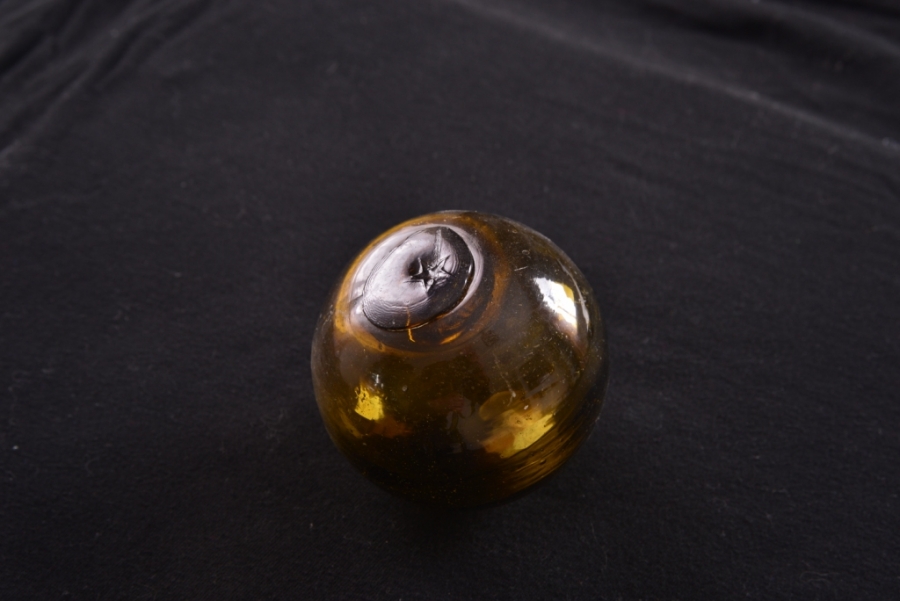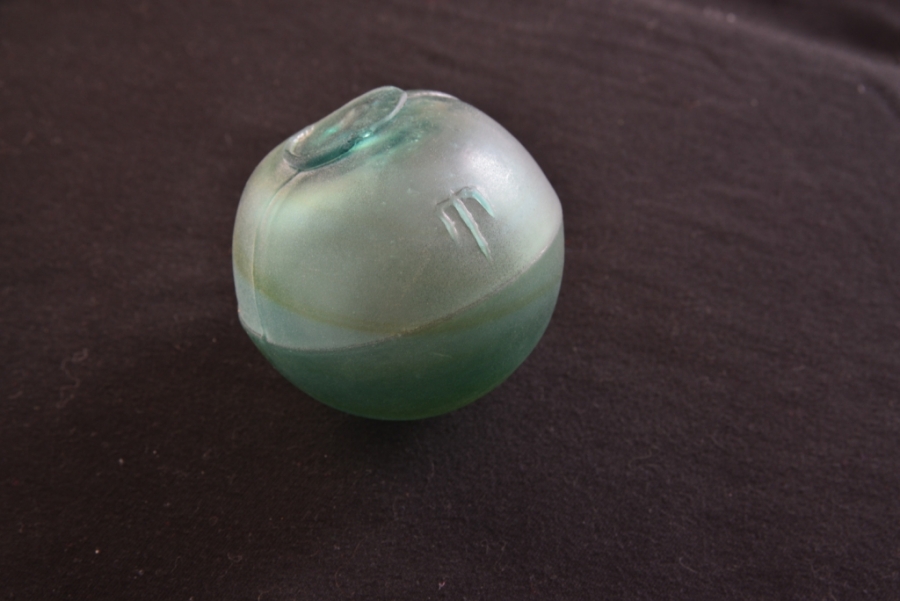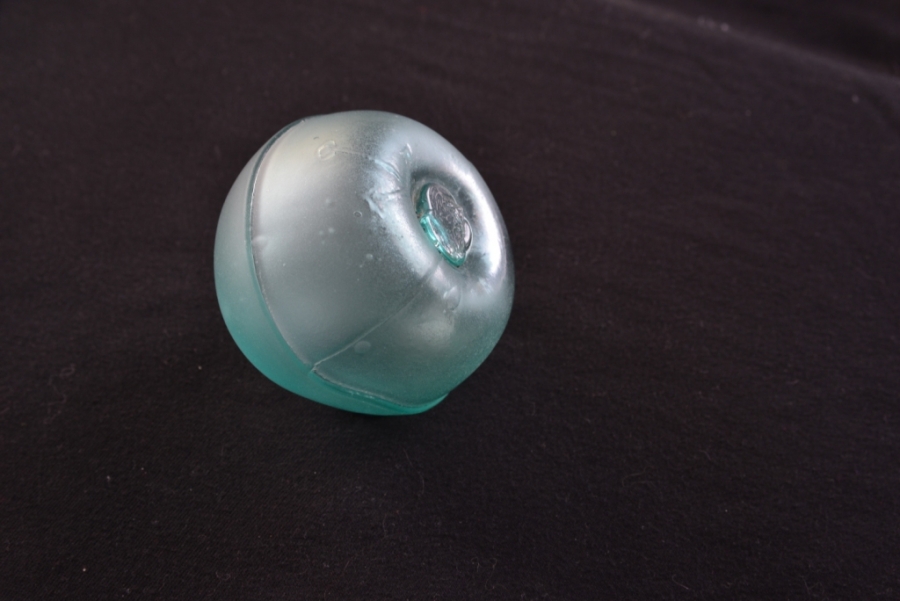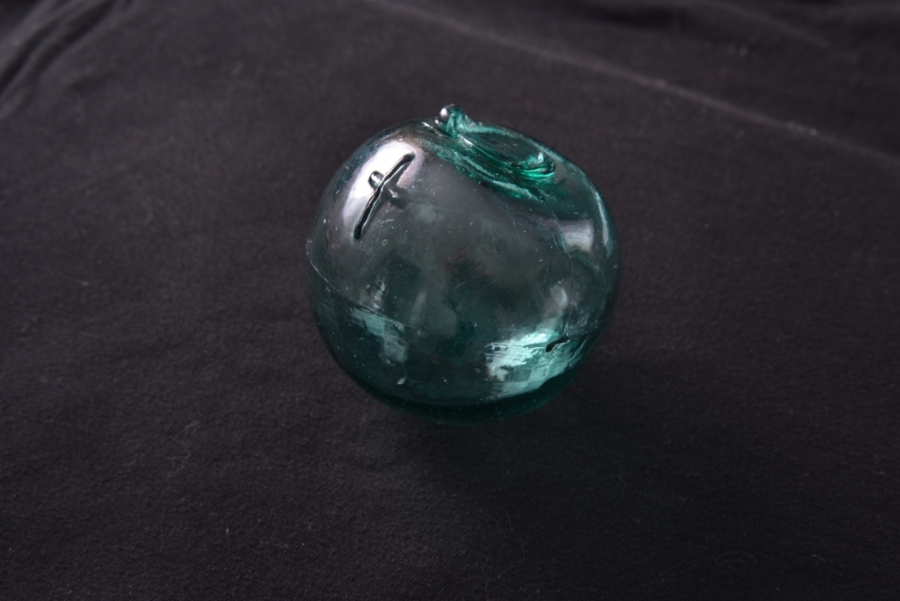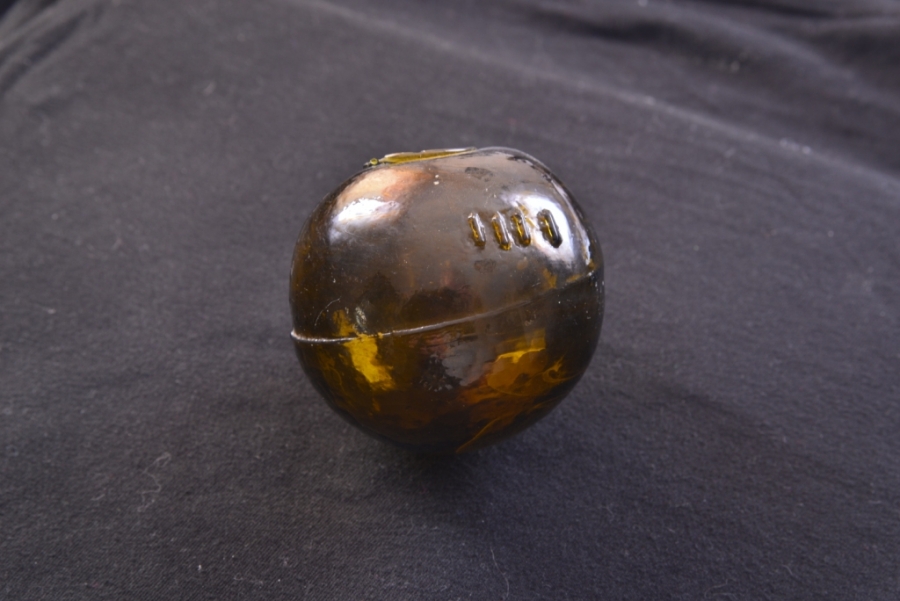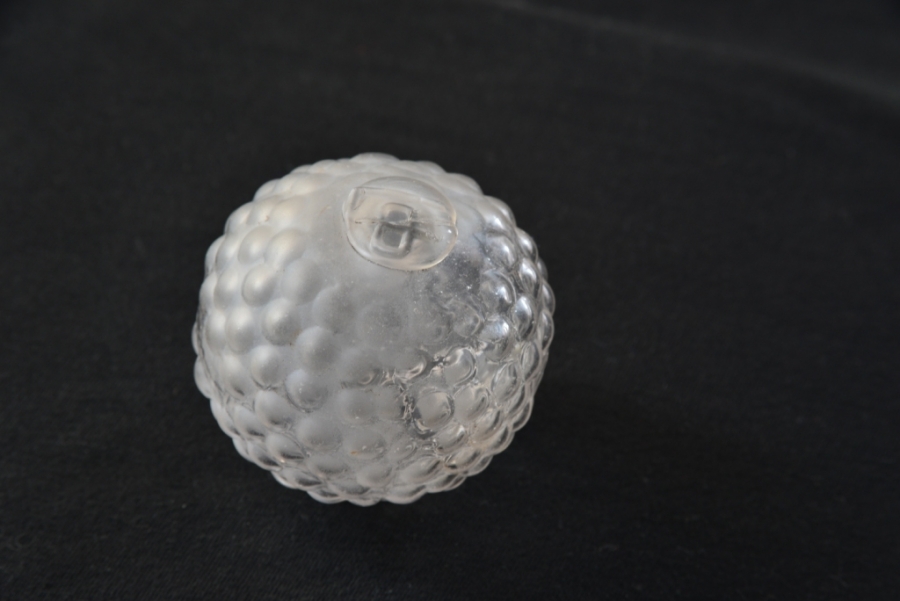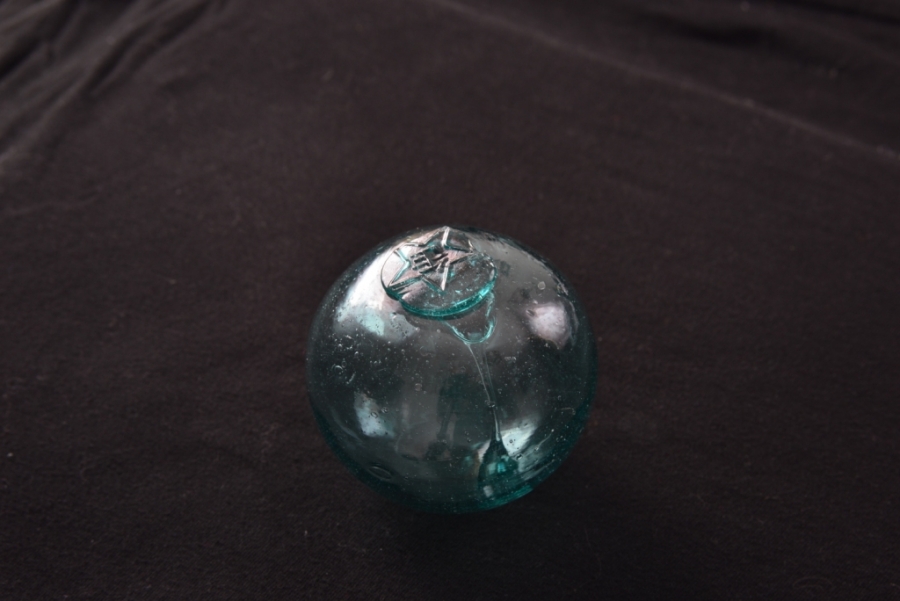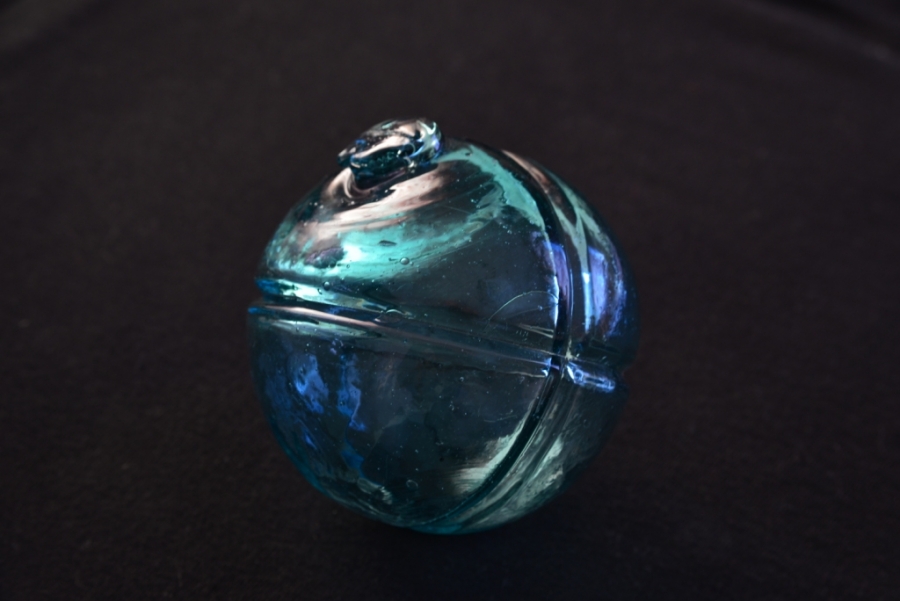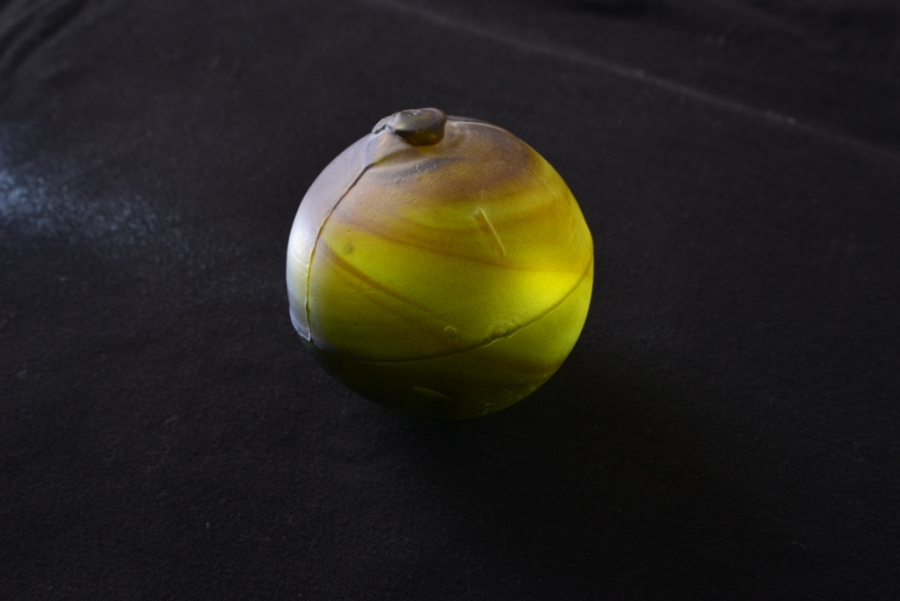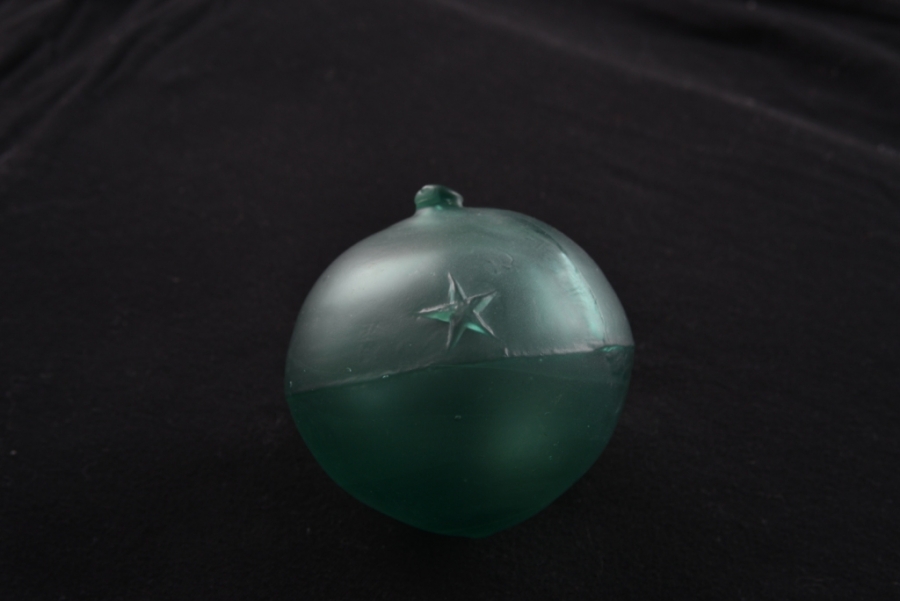
Olga Sokova
Small stars on seal buttons (WP #108) is not so common as big stars with the kanji symbol (WP #109). This float is 77 mm in diameter.
This three-piece mold Japanese float has well stamped great old mark - Yama mark (WP #78). It's uncommon mark. The float is 84 mm in diameter, frosted.
Beachcombed on one of the Kunashir island's beaches (Russia).
This three-piece mold Japanese float has one of the most beautiful old marks - Anchor mark (WP #77). The float belongs to the first generation of tri-molds, this mark is rare. The float is 77 mm in diameter, frosted.
Beachcombed on one of the Kunashir island's beaches (Russia).
This three-piece mold Japanese float has two separate lines - vertical and horizontal ones, this mark is called "broken 90" or "broken angle" (WP #73). It's is uncommon, hard to find. The float is 82 mm in diameter. It also is a double ball.
Beachcombed on one of the Kunashir island's beaches (Russia).
This three-piece mold Japanese float is marked with long cross on one sides (WP #71). This mark is uncommon, hard to find. The float is 85 mm in diameter.
Beachcombed on one of the Kunashir island's beaches (Russia).
This three-piece mold Japanese float has IIII hash common mark on both sides (WP #67) but it's brown amber color is very beautiful. It's 86 mm in diameter.
Beachcombed on one of the Kunashir island's beaches (Russia).
This ultra rare Japanese glass float is known among collectors as "Buddha Head" according to it's unusual texture: it has amazing tubercles on the surface.
I know about existence only three Buddha head floats. I found mine on one of the Kunashir island's beaches (Russia). The 2d float from collection of one Japanese collector was picked up in Fukui (Japan), it has the same color and size as mine. The 3d Buddha Head "lives" in the USA, it's a bit bigger than mine and has blue-green color.
There are three marks on my float. The characters are well stamped. The mark on the seal button is "Naka", it means "Center". The 1st side mark is "Saito-siki", it means "Saito style". The 2d side mark is "Tokkyo", it means "Patent".
This Japanese float is unusual: being marked with a star on the seal button (WP #109) it has also a spindle. The mark is well stamped. It's 75 mm in diameter.
The float was beachcombed on one of the Kunashir island's beaches (Russia).
This double grooved float is Japanese, found on one of the Kunashir island's beaches (Russia). It has no marks. It's 76 mm in diameter.
This three-piece mold Japanese float of the first generation has I hash common mark on both sides (WP #64) but it's color is awesome: yellow-gold with brown-copper swirls, frosted. It has water inside (no cracks). It's 84 mm in diameter.
Beachcombed on one of the Kunashir island's beaches (Russia).
This three-piece mold float (WP #76) of the first generation has a big star on the shoulder (only from one side) and a tiny seal button. It's 90 mm in diameter.
Beachcombed on one of the Kunashir Island's beaches (Russia).
